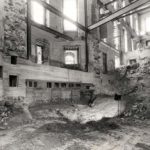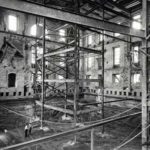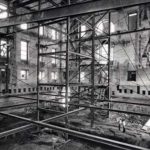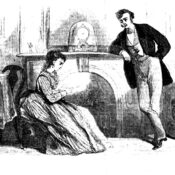As a national symbol, the White House doesn’t have quite the popularity of the Statue of Liberty or the US Capitol Building. But if you consider its history, it might be better qualified to symbolize the country than either structure.
For instance, the White House is the only building of our national government to become a casualty in war. In 1814, advancing British troops burned the structure to a shell. The interior was completely rebuilt, and though reconstruction began immediately, the Executive Mansion was uninhabitable for three years.
The White House has also reflected cultural and political changes by assuming the character of each presidency. Its furnishings and function changed continually from the time of its first resident, John Adams, with each leaving its mark. Most presidents added something to the Executive Mansion. Many made changes to the architecture and decor—usually without considering the tastes of their predecessors. As a result, the White House became a patchwork of small projects that ignored the overall structure, which was slowly crumbling.
By the time Truman became president, the decay could no longer be ignored. As the White House Museum describes it, “Floors no longer merely creaked; they swayed. The president’s bathtub was sinking into the floor. A leg of Margaret’s piano broke through the floor in what is today the Private Dining Room. Engineers did a thorough examination and found plaster in a corner of the East Room sagging as much as 18 inches. Wooden beams had been weakened by cutting and drilling for plumbing and wiring over 150 years, and the addition of the steel roof and full third floor in 1927 added weight the building could no longer handle. They declared the whole house to be in imminent danger of collapse.”
Over the next three years, the interior of the White House was removed and completely replaced, and President Truman and his family lived across the street. The result was a sound, durable structure that basically reproduced the original White House. But as a 1962 Post article noted,
all the mellow feeling of the old house gave way to a stark atmosphere of solidity. As one Washington columnist observed, “The White House is safe, all right, but it has completely lost its charm. That restoration took the heart out of the building. When those floors creaked, you knew Lincoln had been walking there before you. Now it has no more appeal than the Pentagon.”
This was the problem that Jacqueline Kennedy faced when she moved into the great mansion almost three years ago… she was shocked by its collection of paintings. Only a few old portraits had survived the whimsical tastes of incoming families; yet even these, Mrs. Kennedy found, were for the most part badly painted or copied from missing originals. To improve the White House collection—not only portraits but other types of painting as well—she searched for the… the best American painters, and added only a few works by foreign artists.
Her [goal] was to furnish the While House with works of art that earlier Presidents might have liked. To attract some of the best art available, she persuaded Congress to grant the White House “museum status,” under the administration of the National Park System—thus making any donations tax-deductible. [Now]people from all over the country have sent everything from paintings to chamber pots, from wallpaper to silverware.
“Like any President’s wife, I’m here for only a brief time,” she has said. “And before everything slips away, before every link with the past is gone, I want to do this.”
Jackie Kennedy’s project was still in progress in 1962 when she took CBS correspondent Charles Collingwood on a televised tour through the White House. The program, which aired on February 14, gave many Americans their first glimpse inside this national landmark. By careful acquisition, Mrs. Kennedy restored a sense of “executive presence” and historical continuity to the White House.
However, her work shouldn’t overshadow the accomplishment of the Truman reconstruction, for this was an ambitious—even audacious project, as these photos from the Truman Library show:
Truman Library
Truman Library
Truman Library
Truman Library
Truman Library
This reconstruction was fueled America’s faith in the power of restoration. When America saw its Executive Mansion was collapsing, and that limited repairs could no longer save it, its government took drastic action. We dared to clean-out, overhaul, replace, modernize, and reinforce an invaluable piece of American history. We reduced the White House to a shell, confident that we could build a stronger, better version that would carry our past into the future. There are not many buildings that can better symbolize American history.
Become a Saturday Evening Post member and enjoy unlimited access. Subscribe now









Comments
Along with the White House redo,
Harry Truman wanted to make
A balcony to be used to
Replace awnings for shading sake
Over the Blue Room windows, since
These awnings just collected dirt,
An eyesore that made Harry wince.
“Build that baby,” he did assert.
Opponents did not like the plan,
And warned Truman that he would lose
For being such a stubborn man.
Truman ignored them and their views.
It came from his presidency,
And called the Truman Balcony.
Well said and a nice article. I’m not sure I’d give “America” credit for the backbone that President Truman showed in deciding to take on the reconstruction and enduring the inconveniences of it during that time of his presidency.
It also might be interesting to feature a story on the changes that take place in the Oval Office after each new president is sworn in.